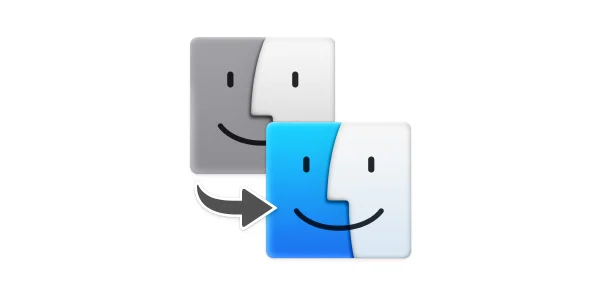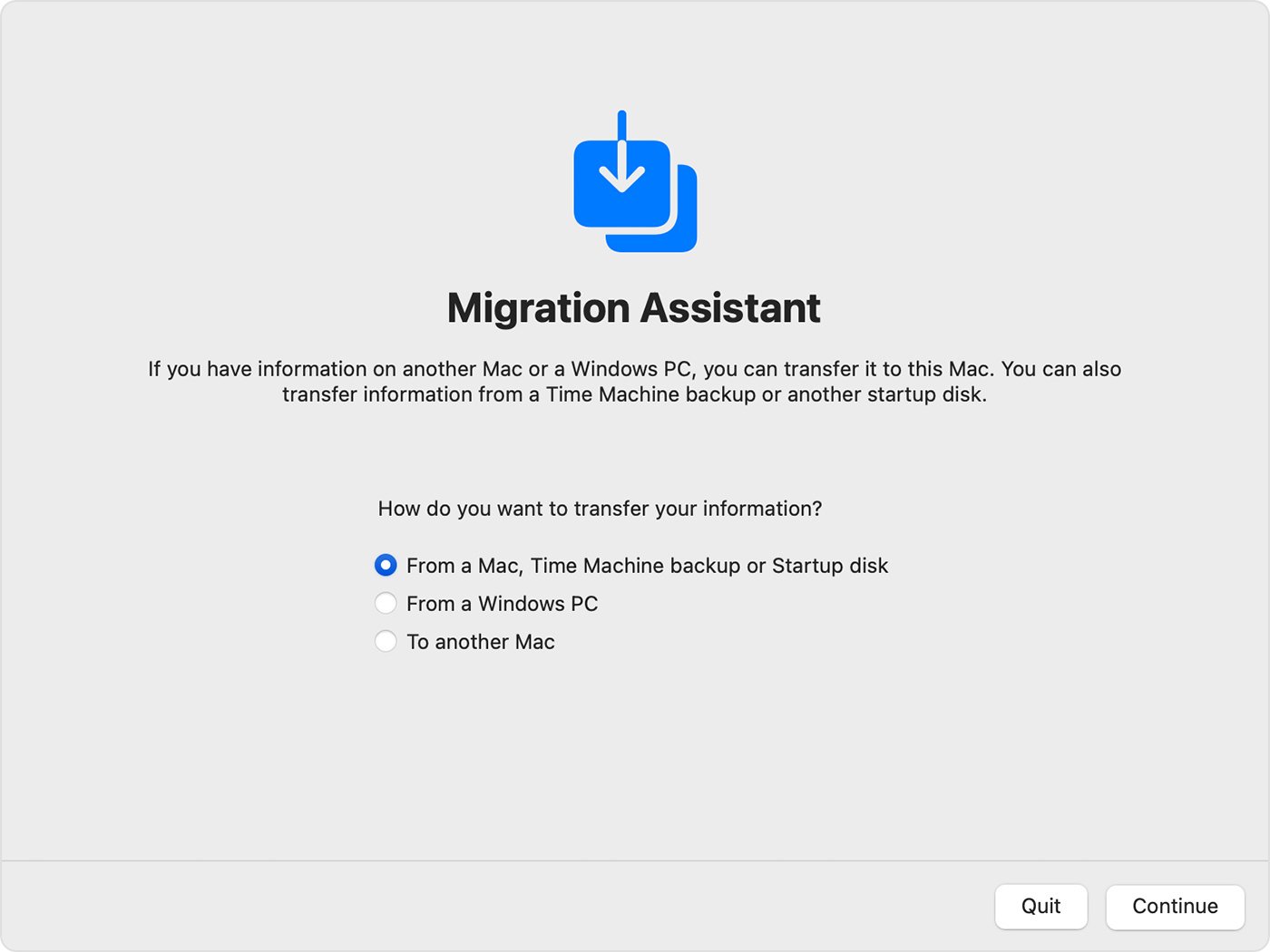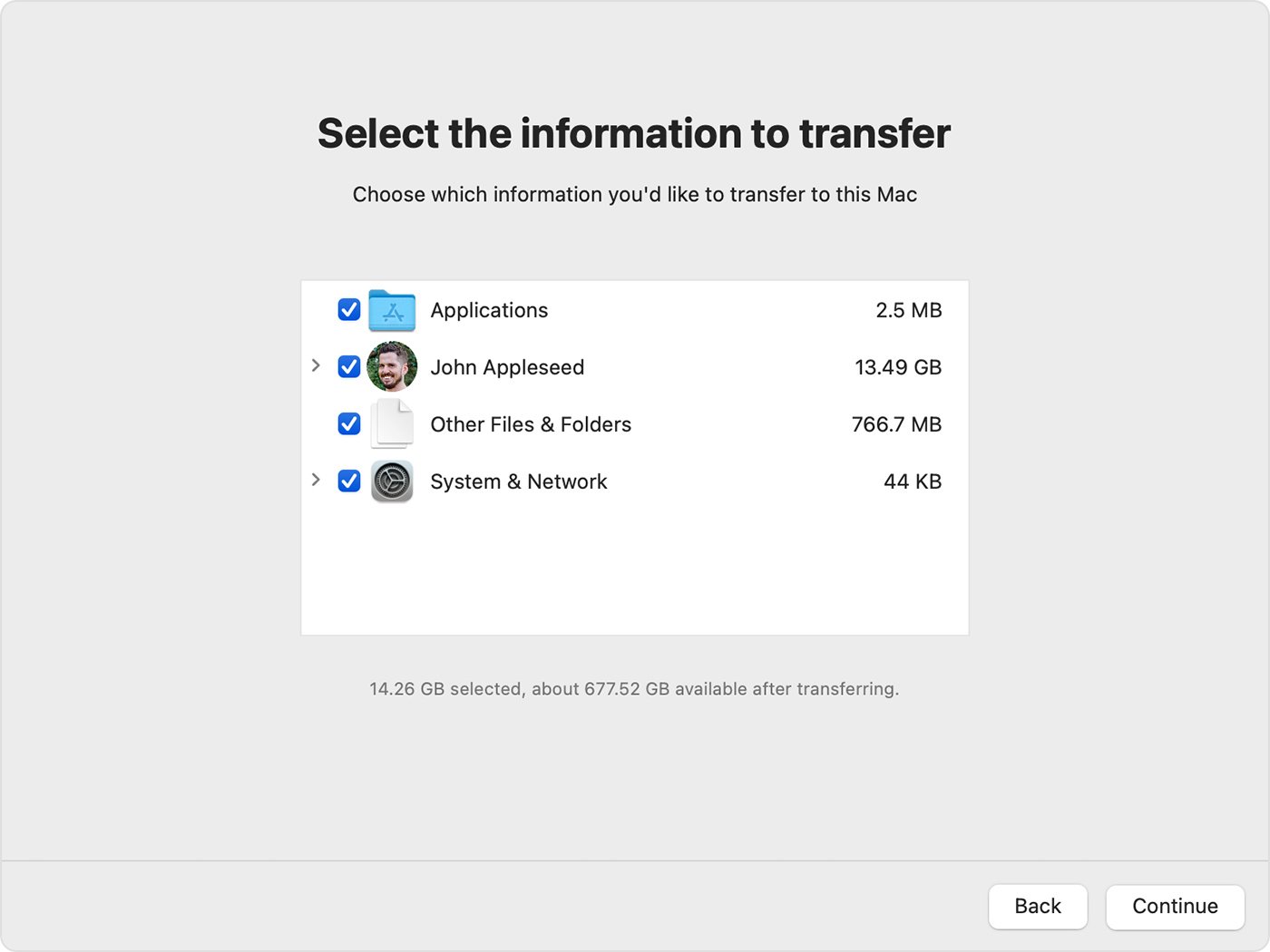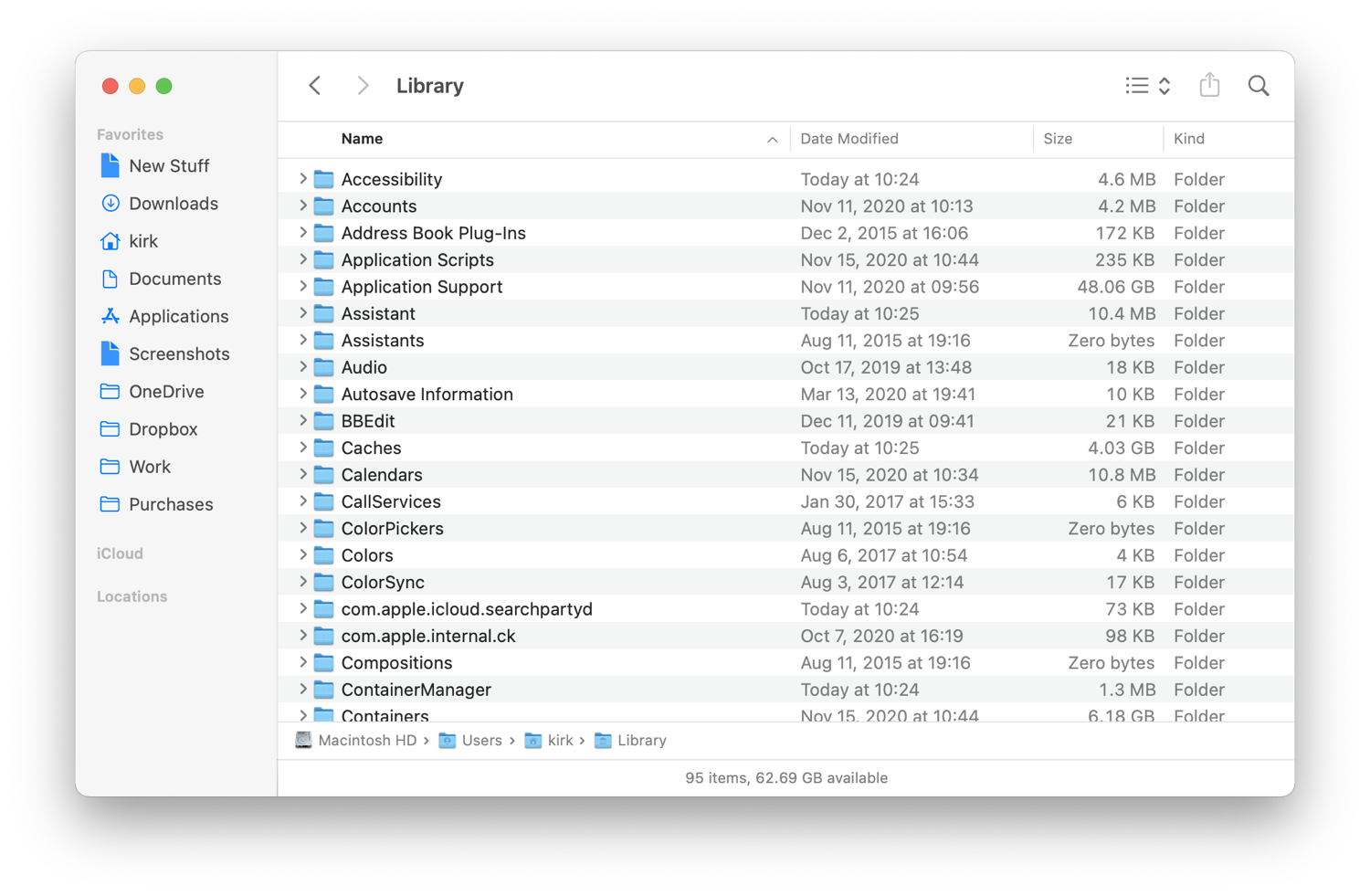How to Set Up a New Mac: Should You Migrate or Do a Clean Installation?
Posted on
by
Kirk McElhearn and Joshua Long

When you get a new Mac, you have options to set it up. You can set it up as a brand new computer, or you can migrate files from an older Mac. This is the fastest way to get up and running, but it has its disadvantages: it may end up copying lots of files that you don’t need, such as files for apps you no longer use.
If you set it up as a new Mac, you can do a clean installation, which has its benefits, but can take a long time. The advantage of this is that you start from scratch with a brand new operating system, but you have to manually copy files from your old Mac.
Here’s how to set up a new Mac by migrating your files to your new Mac or performing a clean installation, and the pros and cons of both methods.
How to migrate files to a new Mac
Apple includes a useful tool as part of macOS: Migration Assistant. This feature is similar to Setup Assistant, which only runs during the setup of a new Mac. Therefore, if you have set up your Mac as new, you can use Migration Assistant to copy files from either a backup or a different Mac. Or you can copy them manually, doing a clean installation, which we look at later in this article.
When you set up a new Mac, the Migration Assistant offers to copy your files from your old Mac. To use this tool on a Mac, do one of the following:
- Make sure both Macs are nearby. If both your old and new Macs are running macOS Sierra or later, Migration Assistant creates a peer-to-peer Wi-Fi network to transfer files. If either Mac is running Mac OS X El Capitan or earlier, you’ll need to make sure both Macs are connected to the same Wi-Fi network.
- If you use an external hard drive for Time Machine backups on your old Mac, make sure that the Time Machine backup has run recently. It’s a good idea to do a Time Machine backup just before setting up the new Mac. Safely eject and disconnect it from the old Mac, and then plug it into the new Mac.
- Physically connect the Macs using a cable and target disk mode. See this Apple support document for more on target disk mode. if your old Mac is running an Intel processor. If both your old and new Mac have Apple’s M-series processors, see this Apple support document to learn how to connect them.
- If you’re migrating from a PC running Microsoft Windows, Apple recommends first installing all available Windows updates. Then, on your PC, run the appropriate version of Windows Migration Assistant based on the version of macOS to which you’ll migrate your data. (If you’ve bought a new Mac in 2024, you’ll want to choose the current version of Windows Migration Assistant, which can transfer data to macOS Sonoma.)
You may see a security code on the old Mac; if so, make sure it matches the one displayed on your new Mac.

Select the Mac or hard drive from which you want to copy data, and then select what type of data you want to transfer—user accounts, applications, other files and folders, and settings—and wait while the files get copied.

Migration Assistant is easy to use. It copies all your files, and you can choose which user accounts get copied over to the new Mac. However, the disadvantage of using the Migration Assistant is that all your files get copied. This can be problematic because if you have been upgrading your Macs over the years by installing new versions of macOS over old ones, or migrating data from old Macs to new ones, you’ll have hundreds, even thousands of old files that you no longer need taking up space. For this reason, you might want to consider doing a clean installation.
Clean Installation
When you do a clean installation, you let macOS run its Setup Assistant and create a new, empty user account. During the process, you enter some information, such as your Apple ID so your iCloud account is activated, but, for the most part, your Mac will be a tabula rasa—a blank slate. It will contain the default apps that are included with macOS, but nothing more.
If you go this route, you then must manually copy files from your old Mac or PC, or from a backup. This part of the process can be time-consuming, but it can allow you to sift through your files to find what you really need, and slim down your Mac. When you do this, you may be surprised to find how much you can ignore from your old Mac.
To copy these files, you can connect your Macs as above, or over a network. Before you copy these files, don’t launch any apps on the new Mac; doing so might prevent some files from copying.
Here’s what you need to copy after a clean installation:
Applications: macOS installs a number of applications, many of which you probably use every day. These include Safari, Mail, Calendar, Music, Photos, and the iWork apps (Pages, Numbers, and Keynote). But you likely use plenty of other apps on your Mac. Copy the ones you want to use manually from the old Mac to the new one. This is a good time to decide which of the many apps in your Applications folder you want to keep. You may find dozens of apps that you rarely use. If so, don’t copy them. (Of course, if you’re moving from Windows, you’ll skip this step; macOS can’t run Windows apps natively—but you can run Windows 11 for free on an Apple silicon Mac.)
Your Home Folder: You want to copy most of the files from your home folder (that’s the folder with the house icon and your username). You don’t want to copy the folders at the top level of your home folder—Desktop, Documents, Downloads, Movies, Music, and Pictures—but rather the contents of these folders into the identically-named folders on the new Mac. Again, take this opportunity to check whether you need to keep all of the files in these folders.
Your Library Folder: There is a special folder in your home folder called Library. By default, this folder is hidden, but it contains many files that you should copy. For example, all of your email from Apple Mail is in this folder, as is the information in the macOS Contacts app. First, you need to tell your Mac to display this folder. Go to your home folder; you should see folders like Documents, Pictures, Movies, etc. Choose View > Show View Options, or press Command-J, then, at the bottom of the window, check Show Library Folder. It will now be permanently visible.
In another Finder window, navigate to the old Library folder. If it’s not visible, press Command-Shift-G, then enter, for example, /Volumes/backup-disk-name/Users/your-user-name/Library, and click Go. (Type the appropriate names for the backup disk and your user name.) You’ll have two windows open.

Here are some of the folders that you want to copy from the old Library folder to the new one; though if you sync a lot of data with iCloud, then many of the folders below will already be populated with your up-to-date data:
- Application Support; though look inside this folder, and only copy folders for apps you’re still using. Note that if you’re syncing data via iCloud, a lot of this data will already be available, so check the folders on the new Mac and don’t overwrite ones that contain data that is up to date.
- Containers; this contains data for many apps, both from Apple and third-party developers. It’s worth looking inside this folder to see if there are any large folders for apps you no longer use. It’s not worth going through all the folders here; there can be a lot. Though if you have enough free time, you could only copy the folders for apps you currently use.
- Group Containers; as above, this has data from many apps, both from Apple. and other developers.
- Calendars; if you use Apple’s Calendar app, and have signed into iCloud, then you’ll already have this data on your new Mac.
- Fonts; this contains any fonts you’ve installed other than the system fonts.
- HomeKit; this has HomeKit settings, if you use those features.
- Music; this may contain AppleScripts, if you have used any with the Music app.
- Keychains; this contains all your stored passwords. If you are signed into iCloud, these will have synced to your new Mac. You’re unlikely to use any of the data here, since Apple’s new Passwords app contains most of the data stored in the keychain.
- Mail; this contains all your email, and your email settings, if you use Apple’s Mail app. You should copy this, unless you only use an iCloud email address, in which case this data will sync to your new Mac.
- Preference Panes; if there are any that you’ve installed that you still use. Very few apps install preference panes any more, so it’s likely that you won’t have any.
- Safari; this has your Safari bookmarks. If you use Safari, and have signed into iCloud, these will have synced to your new Mac.
There’s a lot of important data in the Application Support folder. In addition to the above folders, it’s a good idea to copy any folder whose modification date is in the past year or so. To do this, choose View > As List, then right-click the window header — where you see columns like Name and Size — and enable Date Modified. Click that header, to sort in date order. Start looking at the newest dates and work your way back. If you see folders with names for apps that you know you no longer use, then don’t copy them.
Do the same for the Library folder in general. But, check inside the folders to see if they contain contents with newer modification dates than those shown for the folders; this is probably a bug, but a lot of the folders in my Library folder have older modification dates than their contents. One folder you don’t need to copy is /Library/Caches; this may be quite large, and your apps will create new caches as you use them.
I don’t recommend that you copy the Preferences folder; this probably contains lots of files for apps you no longer use. I do, however, suggest that you go through that folder and copy over any files or folders for apps that you do use, especially if, when you launch them, their setup is different. Preference files record settings for apps, and these can take a while to reset the way you like. However, you may just want to manually reset the preferences for your apps; this is a good way to rediscover your apps and their interfaces. Another option is to copy those items that have been modified in the last year.
You’ll notice, as you start working with the new Mac, that you may need to enter serial numbers for all of the apps that you did not purchase from the Mac App Store. This is because many apps store invisible files on your Mac for registration purposes, and you haven’t copied these. So make sure you know where your serial numbers are.
As you work on your new Mac, you may find that certain files are missing. For this reason you should absolutely not delete your old backup, and especially the ~/Library folder. You may need to go back into that folder and copy some other files to the new Mac.
While I don’t recommend doing a clean installation for each new Mac you get, or for each macOS update, it’s a good idea to do it every few years. Just make sure to keep a backup in case there are any files you need to find that you didn’t copy over the first time around.
How can I learn more?
 Each week on the Intego Mac Podcast, Intego’s Mac security experts discuss the latest Apple news, including security and privacy stories, and offer practical advice on getting the most out of your Apple devices. Be sure to follow the podcast to make sure you don’t miss any episodes.
Each week on the Intego Mac Podcast, Intego’s Mac security experts discuss the latest Apple news, including security and privacy stories, and offer practical advice on getting the most out of your Apple devices. Be sure to follow the podcast to make sure you don’t miss any episodes.
We discussed setting up a new Mac in episode 61 of the Intego Mac Podcast.
You can also subscribe to our e-mail newsletter and keep an eye here on The Mac Security Blog for the latest Apple security and privacy news. And don’t forget to follow Intego on your favorite social media channels: ![]()
![]()
![]()
![]()
![]()
![]()
![]()